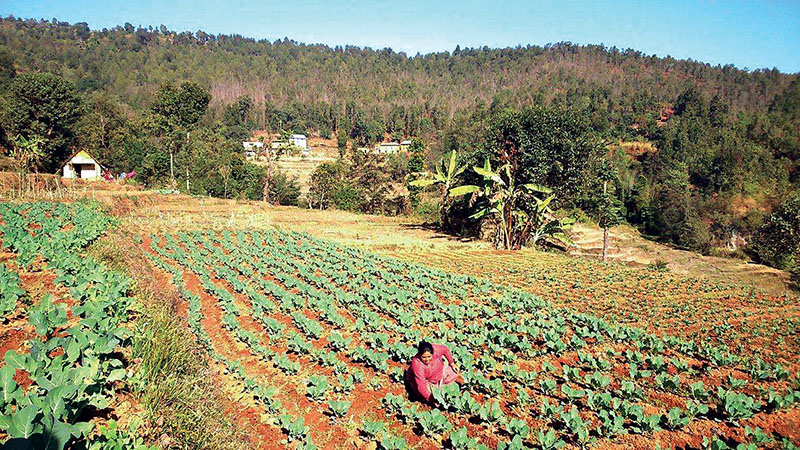Pact signed to develop value chain of veggies, fruits
Kathmandu, July 2
The government of Nepal, United Nations Development Programme (UNDP) and Korea International Cooperation Agency (KOICA) inked a pact recently to implement a project on ‘Value chain development of fruits and vegetables in Nepal’ that aims at raising the incomes of nearly 10,000 smallholder farmers by strengthening the value chain of fruit and vegetable production in the country.
As part of the project, special focus will be laid on production maximisation, post-harvest technology development and rollout, and improved market linkage.
Under the agreement, KOICA will provide support worth $5 million and UNDP will contribute $0.5 million for a joint initiative to be implemented in about 40 municipalities in 12 districts in Provinces 3 and 4, namely Dhading, Kavre, Makawanpur, Chitwan, Dolakha, Ramechhap, Sindhuli, Nawalparasi, Tanahun, Gorkha, Kaski, and Syangja until the end of 2022.
The pact was signed by Hyungkyoo Kim, country director of KOICA Nepal Office, and Renaud Meyer, country director of UNDP. Joint Secretary at the Ministry of Finance, Shreekrishna Nepal, and Joint Secretary at the Ministry of Agriculture, Land Management, and Cooperatives, Tej Subedi, had signed the project document with the UNDP at a function held in Singhadurbar in the last week of June.
The value chain development project focuses on increasing production, reducing post-harvest losses and improving the marketing system for selected fruits and vegetables. Through its efforts, cooperatives and farmers’ groups will have better access to production technology, as well as improved crop production practices.
Post-harvest technologies will also be developed and transferred to farmers in collaboration with Nepal Agriculture Research Council. Support to physical facilities, organisational management and access to market price information will be provided to collection centres and satellite markets to improve market linkages.
Marketed volumes of fruits and vegetables are low in Nepal and farmers have limited access to agriculture technology. Post-harvest losses are high with estimates suggesting losses between 10 and 14 per cent for fruits and vegetables. Careless handling of crops during loading and unloading, and lack of storage facilities at collection centres are some contributing factors. In this context, this programme is expected to also help establish 20 collection centres and satellite markets.






